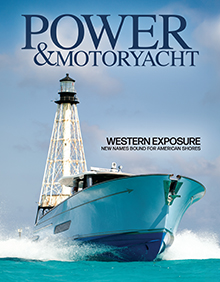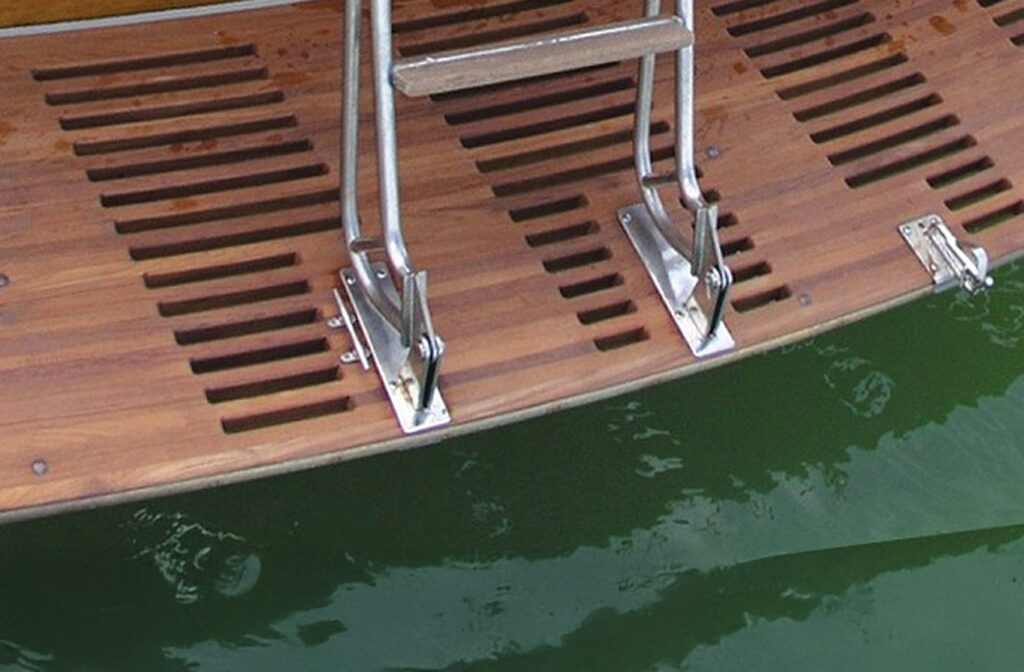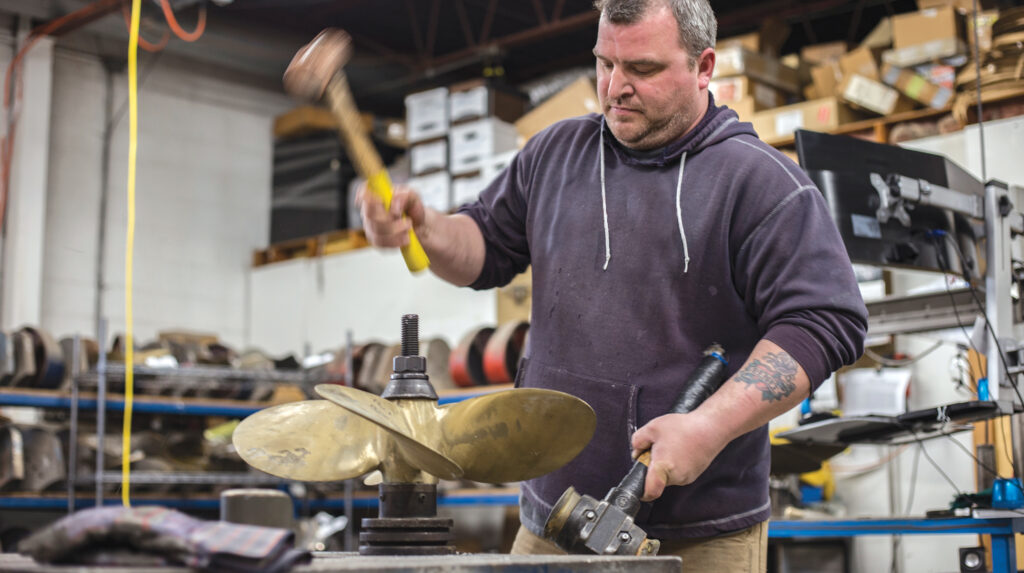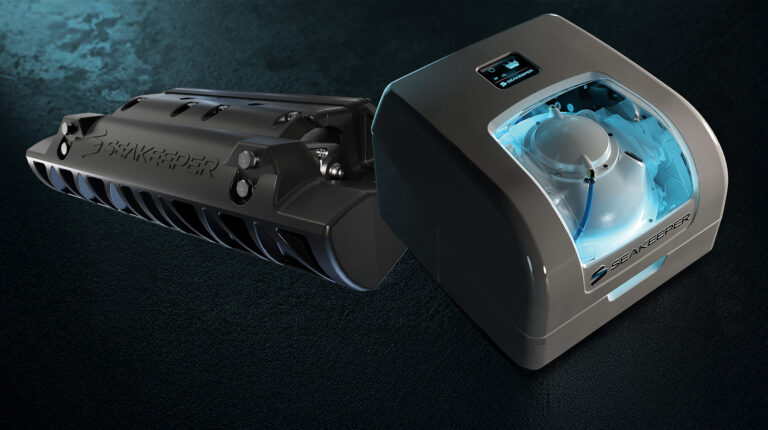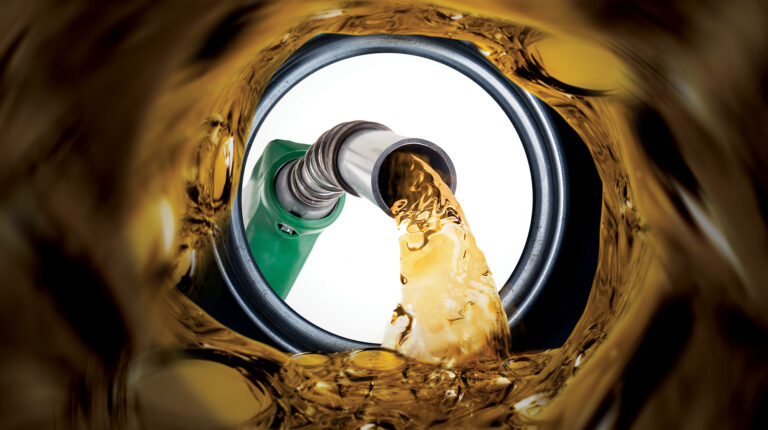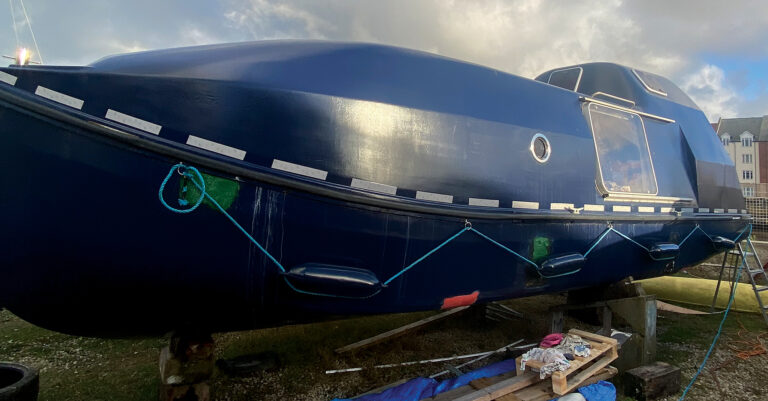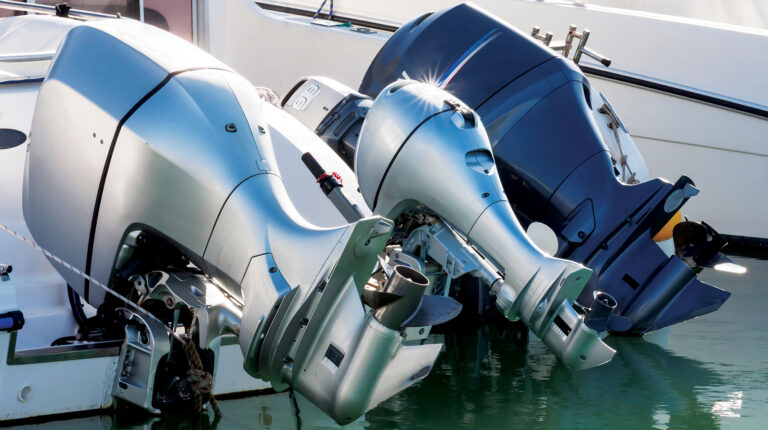Do supply chain issues have you itching to repower an old boat? Read this first, as the benefit isn’t always worth the cost.

At a recent brainstorming session convened on a conference call, one of the Power & Motoryacht gang suggested that because of the shortage of new boats on the market maybe buyers would opt to buy an older vessel and repower it, thereby acquiring a boat sooner rather than later, and also taking advantage of the improved efficiency and lighter weight-to-horsepower ratio of modern engines. This makes sense if the motors are really old, I suppose, but then someone suggested that, rather than repower a new-to-them used boat, skippers might simply upgrade their current engines, even if they still had a few good years of life left in them. This is okay if you’re flush perhaps, but otherwise I’m not convinced.
Why replace engines that are still running and reliable, whether in the boat you own now or one you buy, even if they don’t have the latest technology? It costs a boatload of cash to repower, and it will take many running hours to recoup your investment through savings on fuel and operating costs. I don’t have a PhD in economics, so I could be wrong on this, but it looks to me like the repower thing won’t ever happen for most folks: The average owner will sell his boat before reaching the break-even point, and the price he’ll get for a repowered vessel won’t reflect a dollar-for-dollar return on the cost of new engines. So unless the new motors provide a substantial increase in your boating pleasure, let the next owner take the repowering hit. If the engines develop reliability issues, swap them out; otherwise, just go boating. That would be my choice, anyway.
You might disagree. Boats—pleasure boats, anyway—aren’t about return on investment, at least not financial return. And maybe it’s not a question of what makes dollars and sense, either, but of what folks want and can afford, or can finance. Boating’s a hobby for most of us, so economics usually takes a back seat to desire. And who doesn’t want shiny, super reliable new motors in the engine compartment, or bolted onto the transom? If you’re a bluewater angler, a breakdown could force you to limp home on one engine from 100 miles offshore. So you’d be smart to repower. Or maybe you’ve got a high-performance boat with quasi-racing engines, nosebleed top speed and a throttle that works only at wide-open. Don’t expect 1,000 hours of trouble-free service from those motors. Buy a second set so you can drive on one while the other’s being rebuilt. Let the cost be damned—we’re having fun!

Trim the Fat
I’m guessing that one reason you want new engines is to make your boat go faster and/or burn less fuel. Whether driving Cigarettes and Fountains or full-bodied trawlers that poke along at displacement speed, everybody wants a few more knots—ideally combined with less thirst. (And I want to win a Pulitzer Prize for this column, too, but I’m not waiting for the phone call.) Boats go faster with more horsepower and/or less weight; they burn less fuel with more efficient engines and/or less weight. Less-powerful engines burn less fuel, too, but they usually make the boat slower, so per-mile fuel burn doesn’t change much. Anyway, who wants less power? I’ve been boating for more than 60 years, and in that time I’ve never met anyone who wanted to go slower, so let’s forget that and look at weight and efficiency.
It’s easier to add horsepower than to lose weight. While modern, turbocharged, electronically controlled engines are smaller, lighter and more fuel-efficient than engines of our youth (my youth, anyway), manufacturers have been trimming the fat and reducing fuel burn since the turn of the last century. Unless you’re replacing 30- or 40-year-old diesels, you may not save enough weight to make much difference in speed in a horsepower-for-horsepower engine swap. With gas engines, speed-enhancing weight savings are even less likely—although in either case you could save money at the fuel dock with more fuel-efficient motors. Even if you do repower with substantially lighter motors, they might change the trim of the boat enough that added ballast is needed to bring her back on her lines, which gets you back where you started. It depends on where the engines are located versus the longitudinal center of gravity of the boat. Designers usually put fuel tanks at the center of gravity so fuel level doesn’t affect fore and aft trim. If the tanks are outboard of the engines, for example, you should be okay with lighter engines. But you won’t know for sure until the swap is complete. (You can also trim excess weight by offloading all the unnecessary crap that’s found its way on board over the years. It’s quicker and cheaper than repowering.)
Pump Up the Juice
What about horsepower? You need to add quite a bit of juice, percentage-wise, to get a satisfying increase in speed, unless your boat’s dismally underpowered. Consult with experts to predict what you’ll get from the horses you want to add before starting the project, and to determine if the bigger engines you want are even safe. Simply jamming in more power can have unpleasant results if you go too far. (Rule of Thumb: Don’t add more than the maximum power originally offered by the builder.) Prop shops with sophisticated software can predict performance with variations in power, especially if you have accurate data for the boat as currently equipped. Get friendly with a propmeister or two and let them crunch the numbers; you can repay them when you repower by buying new props.
If you’re thinking of repowering a used boat, run it for a season first so you have a benchmark; maybe the boat’s fine with the power already under the hood. Marine engines, especially diesels, live for thousands of hours when properly maintained, so swapping them out too early is financially silly, unless you’ve got a good reason. A couple of knots more speed wouldn’t be reason enough for me.
Here’s a real-world example of successful repowering, using a boat that most of us lust after: The Bertram 31 of the 1960s and ’70s is on almost every list of Best Boats Ever, so there’s a lot of information available on performance when new. Many 31’s have been renovated at great expense, including new engines. Most 31s were originally delivered with a pair of gas inboards up to 330 hp apiece; twin Detroit 4-53 diesels were optional, with either 140- or 170-hp ratings. That’s not much power compared to the gas package, but according to Bertram literature of the day, the 140-hp Detroits produced a respectable 18-knot cruise, top end in the low 20s and much longer range than the gas motors. Renovators usually replace the original engines with lightweight, fuel-sipping Yanmar, Cummins, Volvo, etc. diesels of around 300- to 330-hp. They weigh about the same as the old 4-53s, so there’s no trim issue. But how much faster are they?
There are a slew of Bertram 31s on the brokerage market. I read ads online, checked other sources and came up with a rough idea of performance for the renovated boats. Cruising speed with the new diesels is typically in the mid-20-knot range, top end in the low 30s, about the same as the biggest gas engines back in the day (makes sense: the horsepower is about the same) but with way less fuel burn. That’s a nice boost in speed versus the original diesels, but there’s twice as much horsepower on tap.
The moral here? Adding only 15 or 20 percent to your boat’s current powerplant should give you a little boost, but probably not much satisfaction. Unless you’re ready to go for the whole enchilada, don’t repower in pursuit of remarkably more speed—buy a different boat.

A Different Kettle of Fish
Forget at least some of the above if you’re talking about outboards: While a 20-year-old inboard isn’t much different from the one you’ll buy today, an outboard of the same age might as well have come from Jurassic Park. Digital controls and steering have greatly improved outboards over the past few years. Replacing motors from the early 2000s with modern ones, and replacing the associated hydraulic steering and push-pull control cables with drive-by-wire
systems, might make an older boat seem young again. Heck, if you’ve got some extra cash you can even add a joystick!
New outboards are lighter than older ones of similar horsepower, or you can opt for more power at the same weight—that’s probably what you want. (Remember the Rule of Thumb mentioned above.) Bigger motors not only produce faster top speeds, but higher and/or more economical cruising speeds, too—sometimes remarkably so. Check the boat manufacturers’s website for performance data of boats similar to yours and extrapolate to fit your own situation. For instance, Grady-White has performance reports for many of its boats on the company website, with speed and fuel burn, which shows how the different power choices affect across-the-rpm performance. Not every boat performs like a Grady, but it will give you an idea.
And here’s one last advantage of outboard motors: There’s less likelihood of the repowering project becoming a full renovation. New outboards generally just get bolted on in place of the old ones, and maybe new controls are added, and you’re off. With inboards, the snowball can start rolling downhill fast. Once the old engines are out, you should clean and paint under them—that’s a given. And have the yard build and install custom drip trays, too. Are the mounts okay for the new motors? Better check the stringers for delamination or water intrusion. If you’re installing more powerful engines, do you need to beef up the running gear? What about the fuel tanks—now that you can get at them, maybe they should be removed and inspected? Don’t forget the generator, too. Maybe it’s time to redesign and upgrade the fuel manifold. Before long the season has ended, you’re still renovating the engine compartment, and your checkbook is smokin’ hot.
So, take my advice: If your engines are running okay, you’re confident they’ll bring you home again without getting a towline involved and you’re having fun on your boat, leave the repowering for the future. Just go boating! Use the money you save to buy more fuel.

